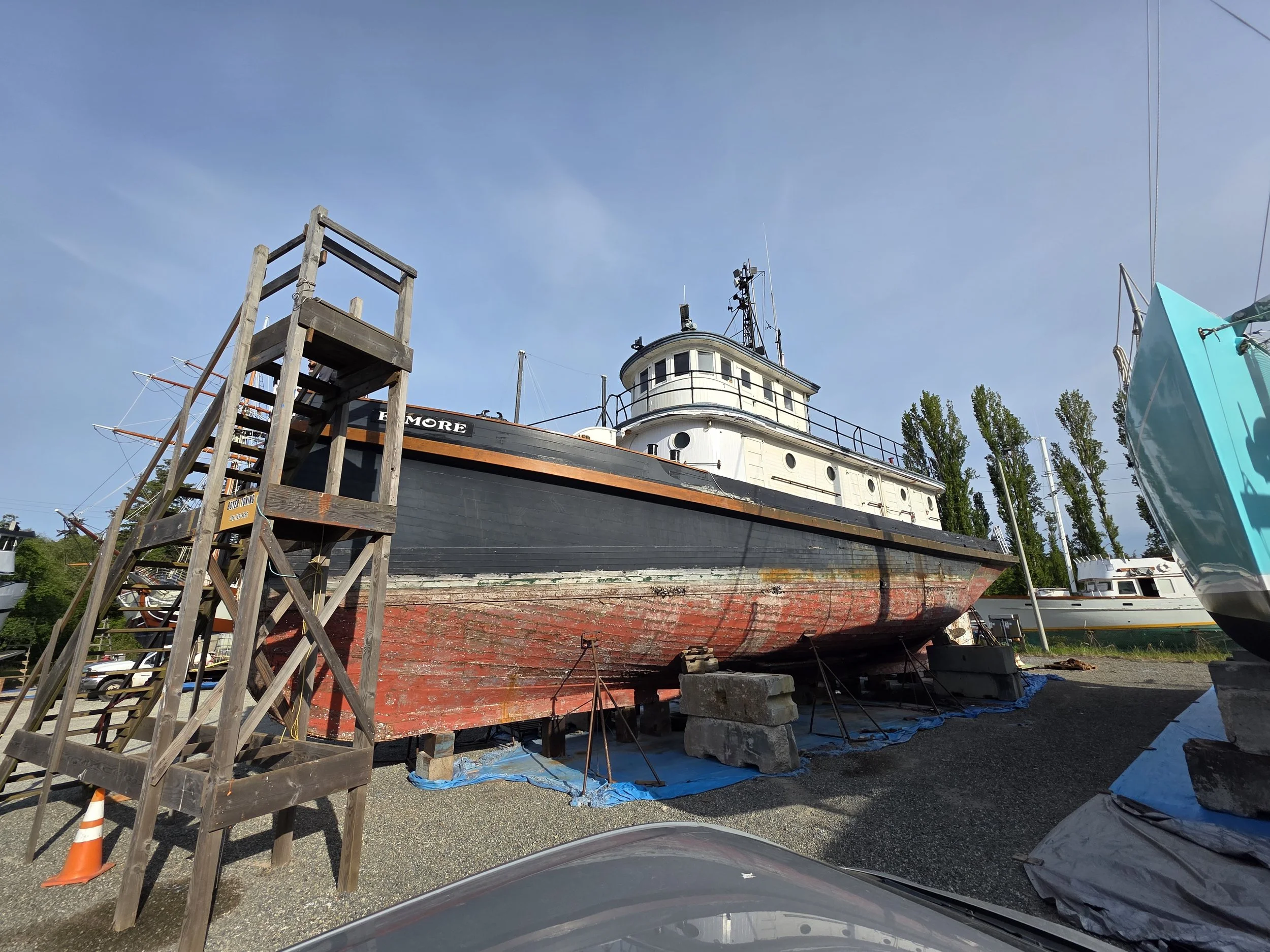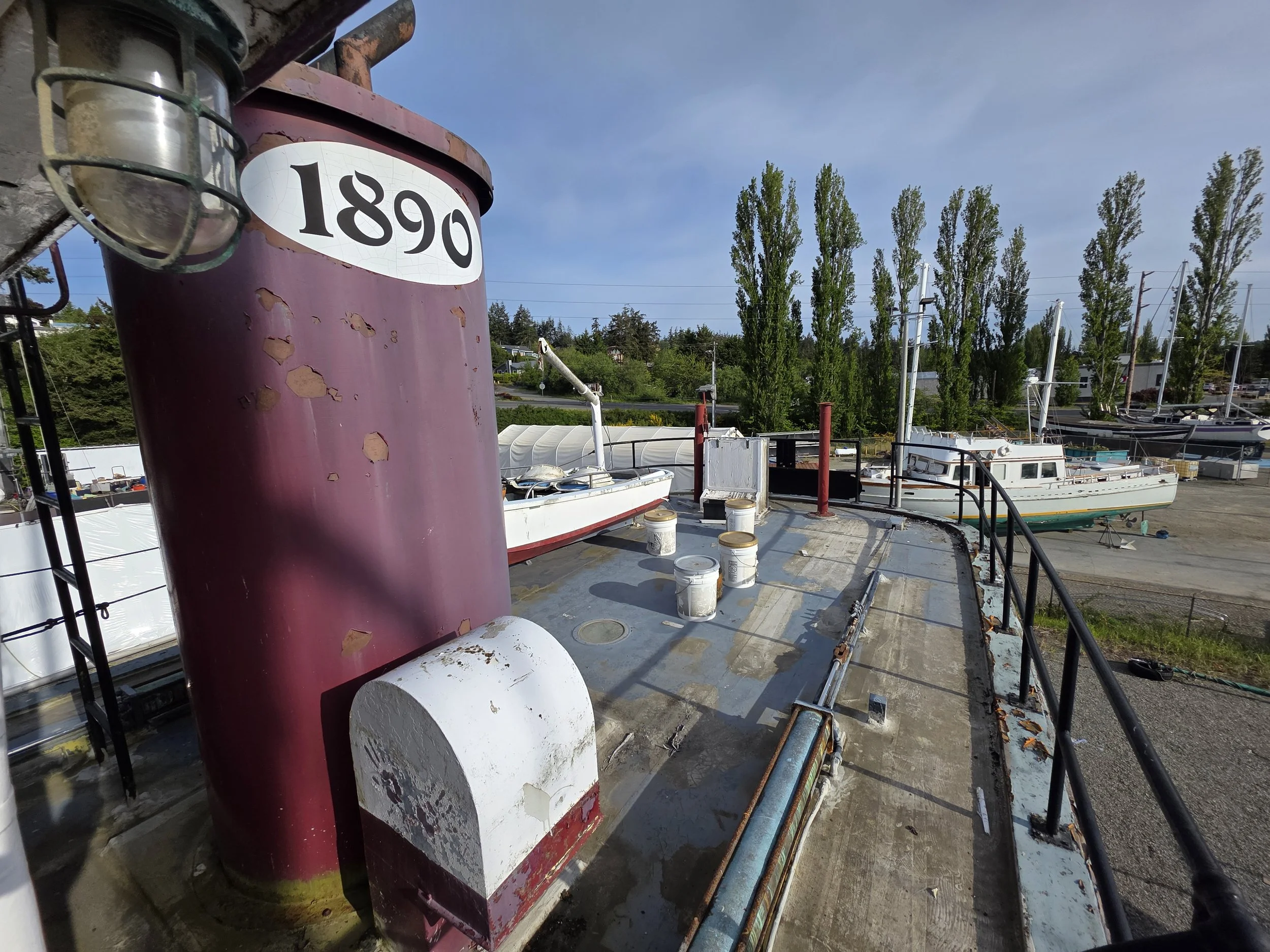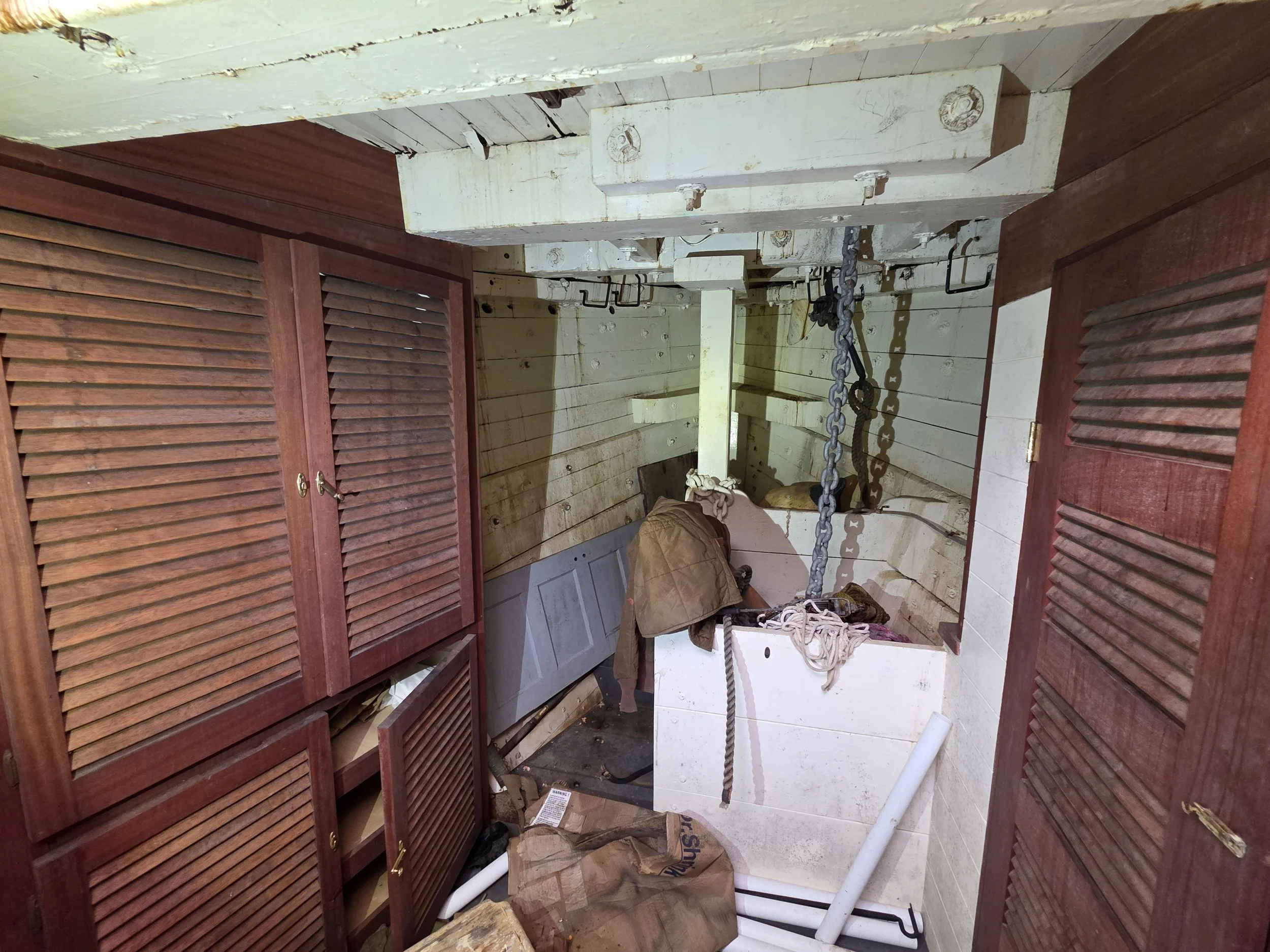Tug Elmore
Elmore – A Legacy of Maritime Service
Built in 1890 by Elmore Fish Canning of Astoria, Oregon, the R.P. Elmore was originally commissioned as a steam-powered passenger and freight steamer for Elmore and Sanborn Fisheries. In 1898, under the ownership of the Towle-Thurston Towing Company of Everett, Washington, the vessel participated in the Yukon Gold Rush, transporting passengers and cargo to Alaska.
In 1901, the Towle-Thurston Towing Company was acquired by the American Tug Boat Company, also based in Everett. The vessel retained her name and continued in commercial service until 1922, when she was severely damaged by fire and burned to the waterline. She was subsequently rebuilt by the American Tug Boat Company as a combination fish carrier and tugboat, renamed Elmore, and re-engined with a 3-cylinder, 110-horsepower diesel powerplant manufactured by Washington Iron Works.
Ownership of the tug changed hands several times over the following decades. In 1967, she was acquired by Puget Sound Freight Lines of Seattle, Washington, and renamed Kiket. The vessel continued to operate under Washington Tug and Barge Company from 1978 and Knappton Towboat Company from 1979, retaining the name Elmore during those transitions.
Decommissioned in 1982 and prepared for scuttling, the vessel was saved at the last minute when her hull was acquired by Dave Updike of Seattle. Soon after, she was purchased by Floyd Waite, who restored her as a private yacht and reinstated the name Elmore. In 1990, ownership passed to Dee and Sara Meek of Port Hadlock, Washington, and later to Henning Heinemann, under whose stewardship she remained active.
In 1996, the Elmore was repowered with a 4-cylinder Atlas Imperial diesel engine, also rated at 110 horsepower. Most recently, in 2024, the vessel was acquired by the Port of Port Townsend, Washington, where she is currently laid up and listed for auction.
With more than 130 years of rich maritime history, the Elmore remains a remarkable example of Pacific Northwest working vessels and their adaptive legacy through changing eras of navigation, industry, and ownership.
















































